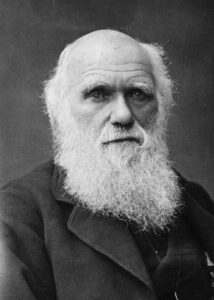Treasure Hunt at The Natural History Museum
Your Biology teacher has organized your classroom’s annual trip to the Natural History Museum in London. This time, he/she has made sure to add the best surprise for everyone at the end. Follow the treasure hunt that has been set up for you, filled with clues and riddles about Charles Darwin and his work. Be prepared to search even in the most unlikely places and think like Darwin! From natural selection to the theory of evolution, from the HMS Beagle to the “Origin of Species”, you will find yourselves immersed in his universe. The treasure hunt is a challenge but at the end of it you will find a big prize. Solve all the puzzles and you will have a chance to explore some of Darwin’s and other great scientists’ hidden animal specimens in the most secret collection of the entire museum, hidden in the deepest and darkest vaults – the Tank Room. Get hunting!
Charles Darwin
Charles Darwin was an English naturalist, geologist and biologist known for his theory of evolution. His proposition that all species of life have descended from common ancestors is now widely accepted and considered a fundamental concept in science.
Charles Robert Darwin was born in 1809 in England. His early interest in nature led him to ignore his medical education at the University of Edinburgh and instead, he helped to investigate marine invertebrates. His passion for natural science was encouraged through his studies at the University of Cambridge. During his 5-year voyage on the HMS Beagle, the observations and theories he made helped him become an eminent geologist. Puzzled by his findings on the geographical distribution of wildlife and fossils, Darwin began to investigate further, which helped him conceive his theory of natural selection in 1838. He also examined human evolution and sexual selection and conducted extensive research on plants. His 8-year work on barnacles helped him find homologies showing that slightly changed body parts served different functions to meet new conditions. In turn, this earned him the Royal Society’s Royal Medal in 1853 and made his reputation as a biologist. In 1959, he published one the most popular books of all time, On the Origin of Species, filled with detailed observations, inferences and consideration about homologies between humans and other mammals, sexual selection and the differences between human races which later proved to be extremely controversial. His theory of evolution, as descent with modification, is one of his biggest legacies and continues to be honoured across the world for his scientific discoveries.

